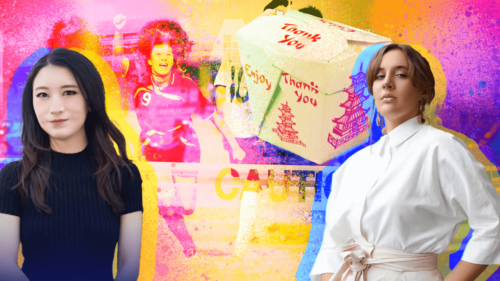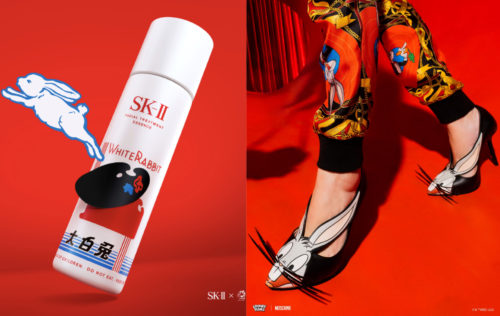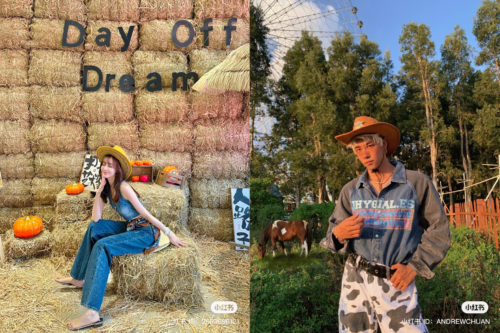A brief history of the qipao: China’s sexiest dress
The qípáo 旗袍, sometimes referred to as a cheongsam (长衫 chángshān), is a traditional garment that has recently experienced a renaissance. To understand the importance of the qipao in our modern times, we have to know its history.

The qípáo 旗袍, sometimes referred to as a cheongsam (长衫 chángshān), is a traditional garment that has recently, for better or for worse, experienced a renaissance. Trendy vintage stores now sell the same dresses once worn by grandmas at weddings, and glittery variations are sported by teens on TikTok partaking in the “share your culture” dance challenge, while fast fashion brands, capitalizing on the resurgence, make misinformed rip-offs to the dismay of Chinese Americans. And of course, you can always find waitresses at traditional Chinese restaurants wearing the dresses.
But to understand the importance of the qipao in our modern times, we have to know its history.


What is a qipao?
A Qipao, sometimes referred to as a cheongsam or a “Mandarin gown,” is a classic garment traditionally made from embroidered silk, featuring a high collar and delicate cloth buttons on the front. The qipaos you might be familiar with are tight-fitting and associated with the Shanghainese socialites of the ’60s. However, the qipao has experienced many iterations through a long and complex history.
What’s the origin story?
No one actually knows for sure where the qipao comes from. There are currently three prevailing theories:

- It is from the Qing Dynasty, when the Manchus ruled China. The Manchus wore long, loose robes called chángpáo 长袍, which had slits down the sides, convenient for riding horses and archery. Though worn by both genders, Han Chinese men of a certain class, like scholars and officials, were ordered to wear the changpao or face severe consequences. As a result, Chinese clothing was very quickly adopted to the Manchurian aesthetic, and its legacy is visible in modern garments like the qipao.

- Historian Yuán Jiéyīng 袁杰英, author of China Qipao, a comprehensive history of the garment’s origins, symbolism, and cultural development, argues that the contemporary qipao’s framework was established during the Western Zhou Dynasty (1046 BC – 771 BC), as it looks similar to the straight skirt created during that time.

- The qipao is actually a very modern idea, created only after Western concepts and trade infiltrated the Republic of China, blending the two cultures into one unique dress.
Women’s liberation + Westernization
After the Qing Dynasty was overthrown in 1919, women were prohibited from wearing qipaos and were forced to inhabit more traditional gender roles, while men became accustomed to trousers.
But gradually, during the ensuing Republic of China period, Chinese people began to learn Western cultures and concepts, and some took a loud and proud approach to striving for gender equality. Young intellectual women fought against traditional values and customs, such as foot binding, by flaunting their bodies (to the extent that they could by at least showing off their figures). By the 1910s, traditional gender roles were being questioned, and women wanted to go to school, have careers, and a greater voice outside of the domestic sphere.

From 1920-49, urban women started wearing qipaos as a form of protest. From there, the dress slowly began to become incorporated into everyday life, and the movement gained traction when political figures like Soong Ching-Ling (宋庆龄 Sòng Qìnglíng), one of the leaders during the Republic of China’s revolution, started wearing qipaos. In 1927, the Nationalist government declared the qipao to be the national dress of Chinese women. The dress was tailored to emphasize and flatter a woman’s body. It became more form-fitting; a high slit was introduced for some of the more daring designs. From there, the qipao became as much a symbol of sexuality as it was one of tradition.

The New Life Movement spread through China in the 1930s, during which Neoliberalism and Neo-Confucian values were integrated into civic life. Women became more empowered, and had role models they could look up to, like Madame Wellington Koo.
Madame Koo

If there is one woman we can credit with popularizing the modern qipao, it’s Madame Wellington Koo (Oei Hui-Lan, or 黄蕙兰 Huáng Huìlán), a Chinese-Indonesian socialite and First Lady of the Republic of China. In the early ’20s, she adapted the qipao and incorporated it into her modern and luxurious lifestyle.
In many of her most iconic photos, Koo is pictured wearing qipaos in the modern style, with its side slit or a shorter leg, showcasing these garments to an international audience. She also insisted on using local materials to make her beautiful dresses, citing that Chinese silk was superior. Koo was photographed for global fashion magazines and had her portrait done by world-renowned photographers and painters. Between the 1920s and ’40s, she was regularly named “Best Dressed Woman” by Vogue.
Chinese bombshell

In the 1960s, the “Chinese bombshell” became a fixture of Chinese cinema, as theaters began showcasing steamier Western-inspired romances. Actresses such as Nancy Kwan, who was referred to as the “Chinese Bardot,” were frequently shot in modern qipaos, inspiring Western stars such as Grace Kelly to rock their own qipaos, further expanding the garment’s reach.

The qipao started to become an even more global trend (literally) when it became a uniform for Chinese and Taiwanese flight attendants, elevating the garment as a luxurious, professional, and high-class uniform.

Cultural Revolution
From 1949 to the 1970s, the qipao suffered a decline in popularity, as it was seen as antiquated and indicative of bygone Chinese traditions that were halting progress and modernization. People favored more practical and Westernized workwear such as jackets and trousers. During the Cultural Revolution, many tailors fled to Hong Kong, where their traditional Chinese silhouettes fused with Westernized trends and patterns.
It wasn’t until the 1980s that the qipao regained popularity. Chinese people started returning to their traditions and cultural roots, and discovered newfound inspiration in the qipao for pageant wear, wedding dresses, and film costumes.
The 1990s

The late ’90s was a crazy cultural melting pot, and a time of intense experimentation (and appropriation). During this era, the qipao became a staple of the modern young woman’s wardrobe, with everywhere from mall shops like Delia’s to high-fashion runways selling the signature mandarin collars. Stars like Kate Moss and Claire Danes wore them on the red carpet.
Chinese-American writer and poet Jenny Zhang would later reflect on this time in her piece, Blonde Girls in Cheongsams.
Film

Much of the qipao’s legacy can also be attributed to Wong Kar-Wai’s critically acclaimed and incredibly influential In the Mood for Love (2001), a Hong Kong romance between lovers played by Tony Leung and Maggie Cheung. The highly stylish film inspired modern film aesthetics and costume design, as well as younger generations of Asian-American film lovers.
Modern-day styles + appropriation
The early 2000s signaled another time of radical experimentation and genre cross-pollination in Western fashion, with designers taking cues from Eastern prints and silhouettes.
Influential designers like Anna Sui and Louis Vuitton brought modern interpretations of the qipao to the runway.
Vivienne Tam, who was once a designer for Jean Paul Gaultier during his heyday of Eastern-inspired mesh shirts, continues to create playful interpretations of the qipao.

Up until a few years ago, the qipao in its purest form stayed on the periphery of high fashion and Western trends. Then, a teen in Utah wore a qipao to her prom, sparking outrage and debate that led to the slogan — which was part-war-cry, part-exhausted-decree — “My culture is not your prom dress.”
This incident ignited a nuanced debate about who has the right to wear specific cultural clothing, and what message it sends to the general public and the specific culture’s community. Is it appropriation if it’s first and foremost appreciation? Isn’t fashion for everyone? Some activists claimed oversensitivity, while other Chinese Americans were distraught by the perceived appropriation.

Around the same time, brands like Zara, Topshop, Reformation, and H&M were accused of appropriating the qipao style after using words like “Mandarin collar” and “Oriental print” to describe the clothing. Chinese Americans have been frustrated not just by the blatant appropriation but also the hypersexual riffs, which feature extremely tight and short versions of the dress, perpetuating myths of the “Exotic Oriental” or geisha stereotypes.

Sable Yong, a contributor to Allure, wrote a piece titled, “Are We Really Doing This Whole Asian Cultural Appropriation Fashion Trend Again?” which now feels like a follow-up to Zhang’s experience of the ’90’s.
The next generation
However, there are many Chinese designers set on reclaiming the qipao as it was meant to be: a modern garment for the modern Chinese woman.

Alexa Chung, a British socialite turned fashion designer, has her own interpretation of the qipao.

YanYan Knits, a Hong Kong-based clothing line started by Phyllis Chan and Suzzie Chung, embraces nostalgia for Hong Kong’s past while creating interpretations in playful colors and streamlined shapes. In a Vogue interview, Chan noted, “There’s been an uptrend in the iconic ‘Chinese waitress’ dress in the West…but Chinese clothing isn’t just this one thing.”

Jingwen “Daisy” Wang is the New York-based designer of DAWANG, a “Modern Chinese” brand exploring what it means to be Chinese American, honoring the past while embracing the present through sexy streetwear.
And Melbourne-based designer Betty Liu is elevating the qipao to a plane of surreal high fashion, creating extravagant gowns that subvert the hypersexualization now associated with the garment. Liu collaborated with photographer Jess Brohier to create the photo series Eating the Other, which is meant to challenge cultural appropriation and complicate Western notions of Chinese clothing without sacrificing beauty or elegance.

The qipao has proven itself to be an evolving and adaptive piece of clothing that has persevered despite history, controversy, and appropriation. From feminist icons to onscreen bombshells, the qipao has shown decade after decade that it is more than a dress; it is a symbol of freedom, independence, and power, and has an exciting and, I daresay, a sexy future.





